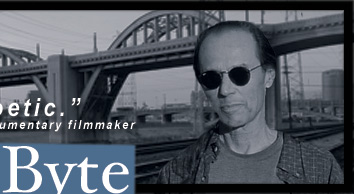
 |
The Poverty Suit
John Steinbeck said, “Socialism never took root in America, because the poor there see themselves not as an exploited proletariat, but as temporarily embarrassed millionaires.” Socialism aside, the have-nots always find ways to fantasize about the haves. In their have-not imaginations, even while poverty was at its highest level ever, the economically poor saw themselves as soon-to-be resurrected financially rich. That’s right. Poverty peaked, but the poor, somehow saw themselves not as downtrodden, but simply waiting their turn at Donald Trump won the lottery riches. And wait they did. Meanwhile, our economic checks and balances vanished. The real wealthy — the people with reality-based-phenomenally-fat-financial portfolios — saw to that. They flaunted their consumption and wanted no rules about it. Bigger was better and biggest was best. The 400 richest people had one trillion dollars' of swaggety swag. And it was truly swag. You don’t earn one trillion dollars. No one does. You steal it, one billion at a time. You embezzle, bribe and coerce. And, in the process, since there’s only so much to go around, you create poverty. In this world of jackass conspicuous consumption the poor became invisible — all 150 million of them. No one bothered to bail them out of the Great Recession. While one percent of the nation's richest controlled 42 percent of the wealth, one-third of the middle class — mostly families with children — fell into poverty. And poof. They disappeared. How could this happen? Was it magic? Not so much. The poor simply looked bad on the national resume, especially to politicians, so the poor were deleted from our national consciousness. But poverty had an odd way of getting our attention. Just when the poor had vanished from sight, a new technological breakthrough broke through the national consciousness — the Poverty Suit was born. More nuanced than the scramble suit, the Poverty Suit was almost a pod. It took over your body — a kind of form shifter that created a new humbler person: You, poor. Initially, the Poor Suit was used for punishment. Early in his 150-year prison term, Bernie Madoff slipped one on for two months. That was a hard sentence. Bernie was allowed to run free, but ended up on skid row, hungry, and in poor health. In his poor suit, no one except for his prison guards, recognized him. Meanwhile, the suit provided some much needed behavior modification. When Bernie finally shed his Poverty Suit he was a new improved man, not the greedy son of a bitch he was before. Living in someone else’s shoes, even if they’re your own, can do that for you. Soon after, the American people decided that each person whose wealth exceeded one billion dollars would be required to pay a so-called Poverty Suit Tax of one week in a Poverty Suit for every billion dollars they made. There was, as you might expect, an uproar from billionaires. Spending a week at the bottom was, at least for them, a huge sacrifice to pay in return for spending the rest of their lives in luxury. But in the end, the rich had to pay. They slipped on a suit and, believe it or not, they learned something in the process. They developed something we call empathy. In the meantime, the people who brought us the Poor Suit came up with another idea — the Rich Suit. When the United States Department of Health and Human Services got hold of one, they made the Rich Suit available to low income families. So, the poor tried it on, but it never really took hold. It made them feel like temporarily embarrassed millionaires. And, this time, they knew they weren’t. — Nathan
Callahan © NathanCallahan.com / Nathan Callahan / all rights reserved |
Broadcasting Fridays at 8:50 am from KUCI 88.9 fm Orange County, California
|